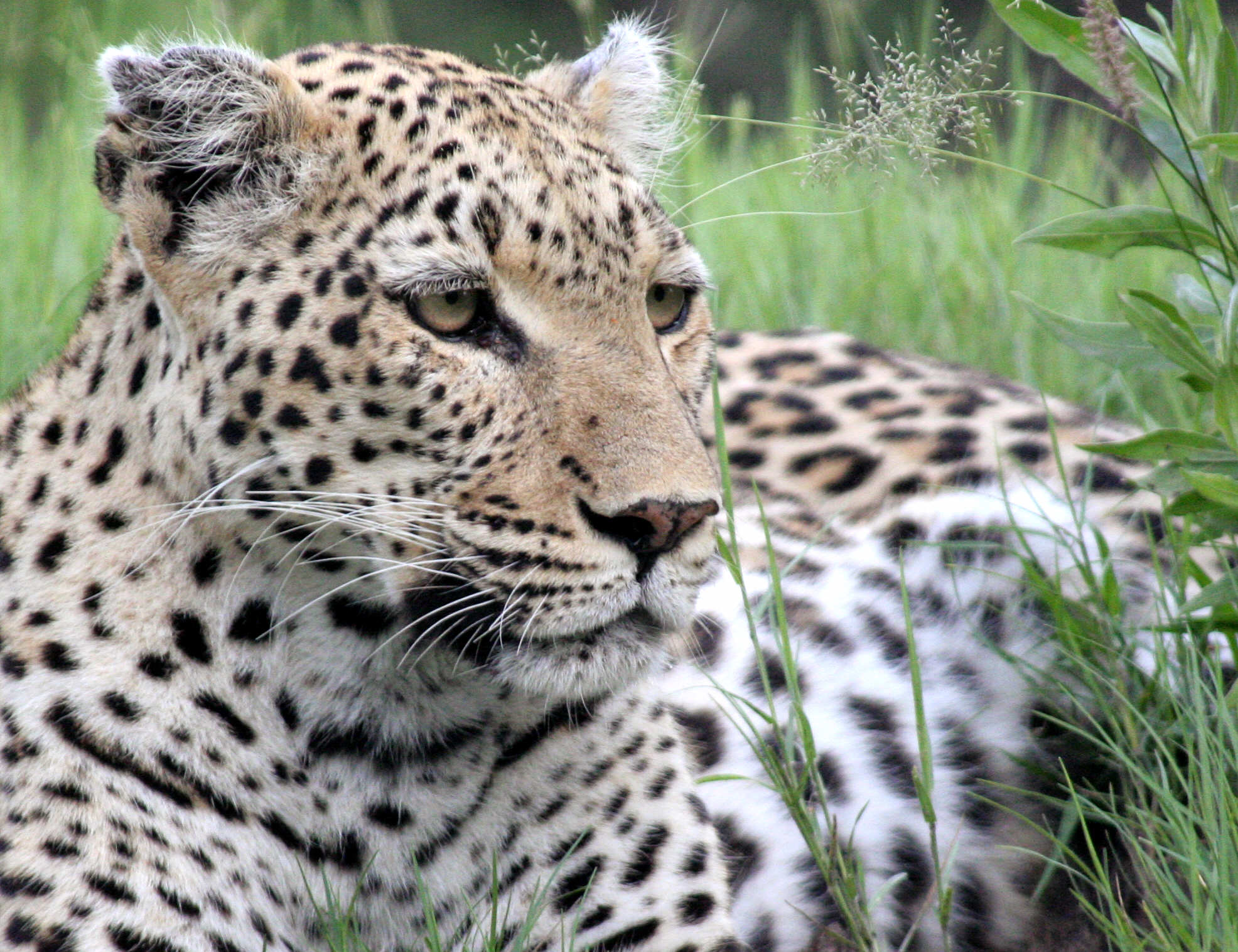
Stanley's Camp was similar to other Okavango delta camps I have enjoyed in the past. Not "the same", of course... each has it's "personality"... but it achieved a similar high standard.

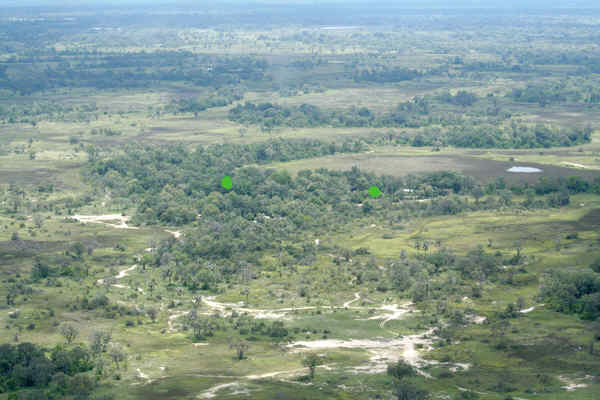
©TK Boyd 2/12
This is a view of the camp and the area around it taken looking north. The green dots are about 240 meters apart. The right hand one is the central dining, etc, area, and the left hand one is my tent. As the next image shows, they both look north across a wide basin of marshy grassland... but, thankfully, mosquitos were not a problem. In the dry season, which is not what I saw, that basin is probably a waterhole, constantly drawing wildlife to your "back door".
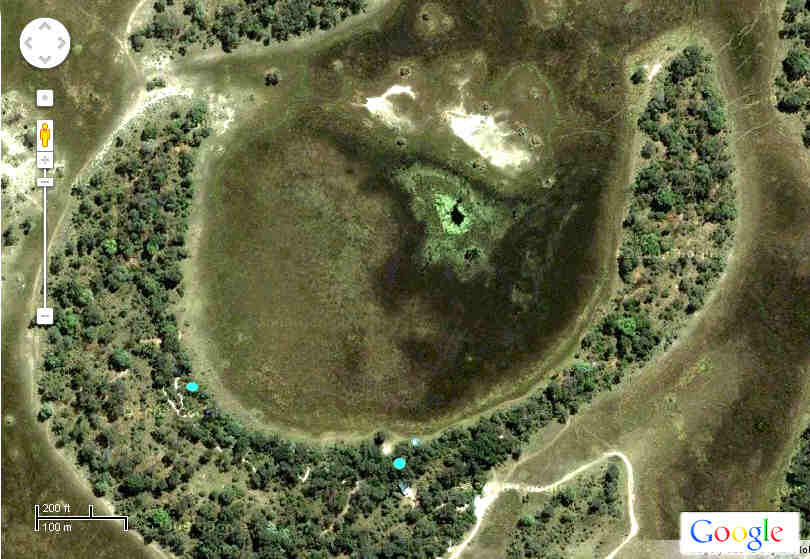
©TK Boyd 2/12
The above, thank you Google, shows the same thing as the oblique photograph before it. The green dots are now cyan. You can see a bit of one of the many tracks used for exploring the wilderness at the lower right, the southern edge of the photo. One of the benefits of visiting the Okavango is that your guides are not restricted to only the tracks. Your guide will also drive cross-country when appropriate.
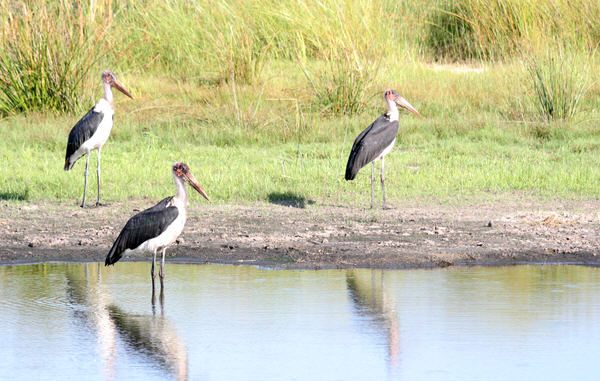
©TK Boyd 2/12
xx
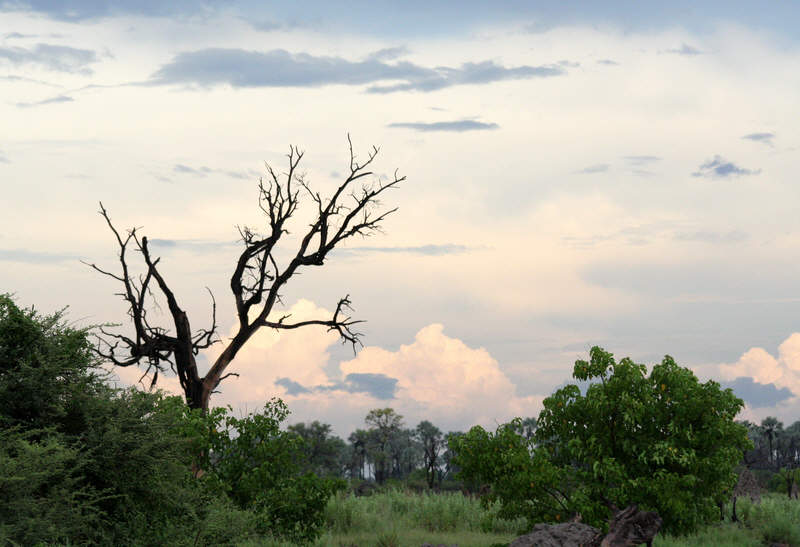
©TK Boyd 2/12
xx
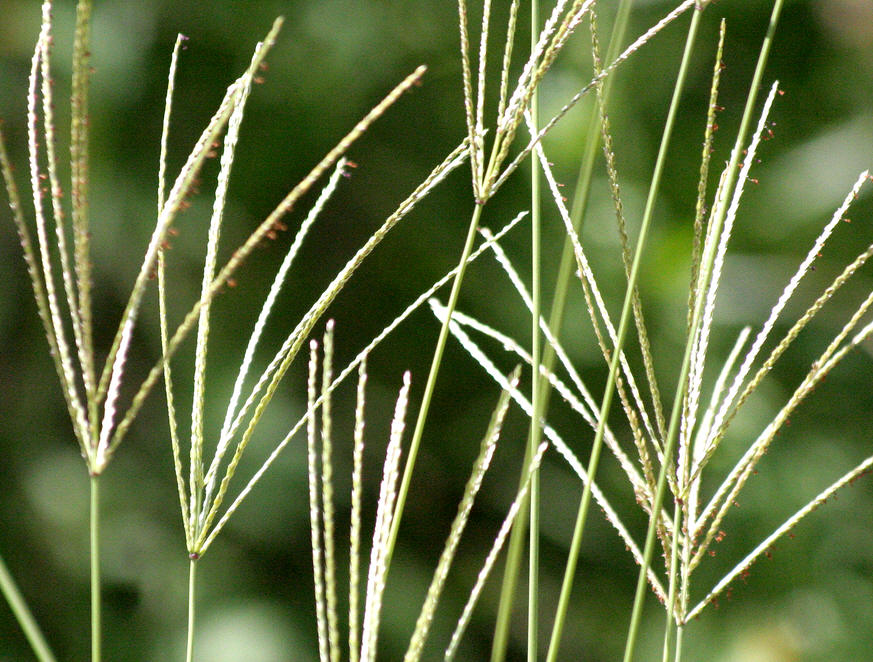
©TK Boyd 2/12
xx
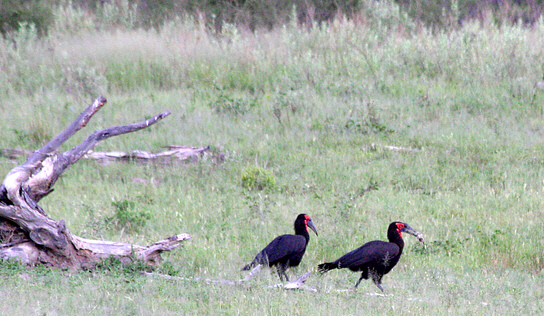
©TK Boyd 2/12
Southern ground hornbill (Bucorvus leadbeateri). These are huge birds, and very impressive strutting across the landscape. Males can weigh nearly 14 pounds. Top of head would be about mid thigh on a man.

©TK Boyd 2/12
xx
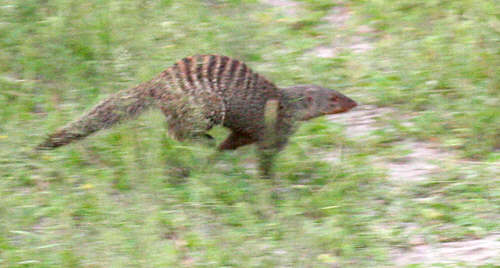
©TK Boyd 2/12
xx
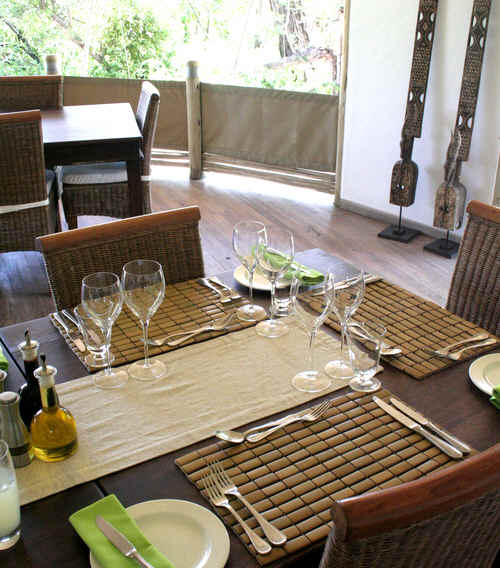
©TK Boyd 2/12
xx
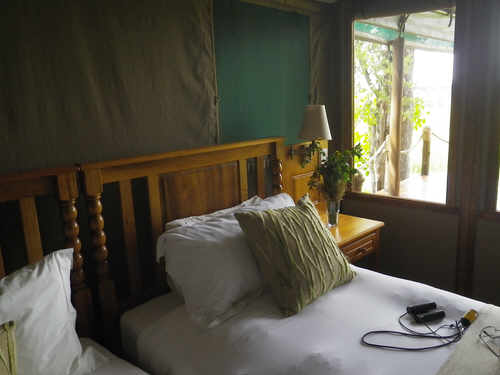
©TK Boyd 2/12
xx
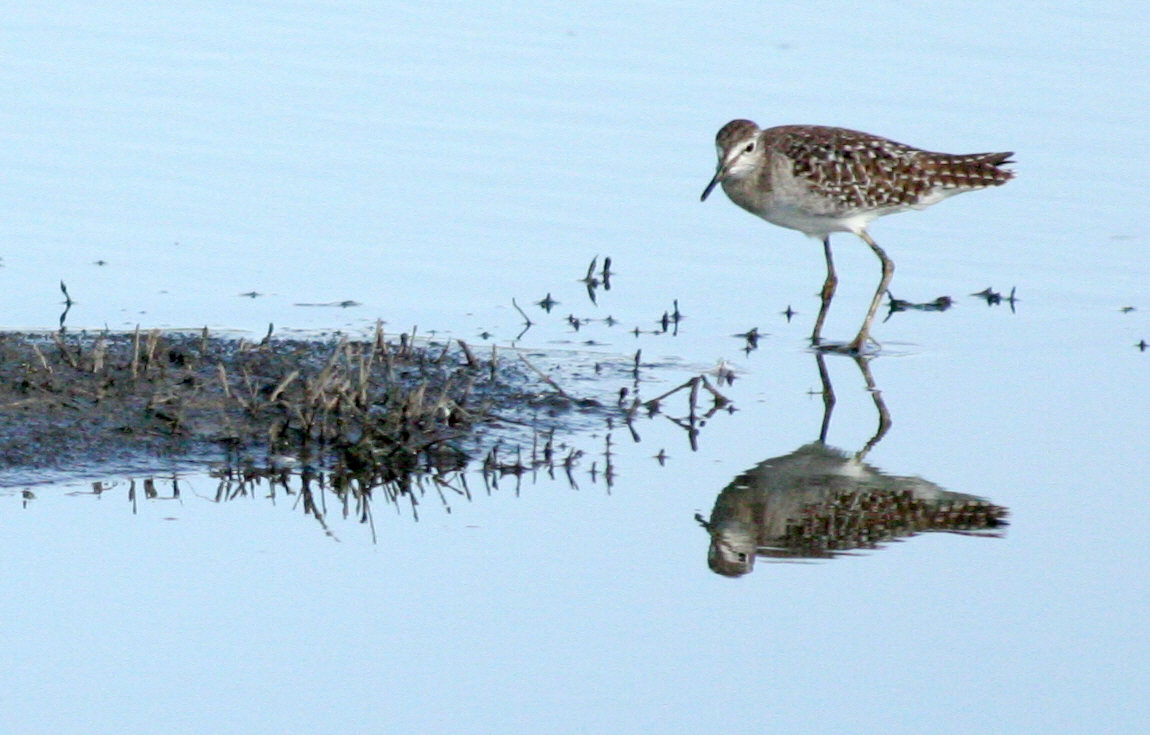
©TK Boyd 2/12
xx
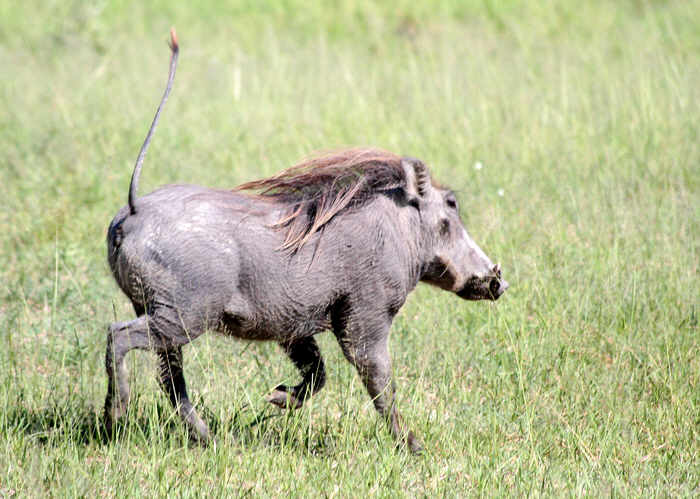
©TK Boyd 2/12
xx
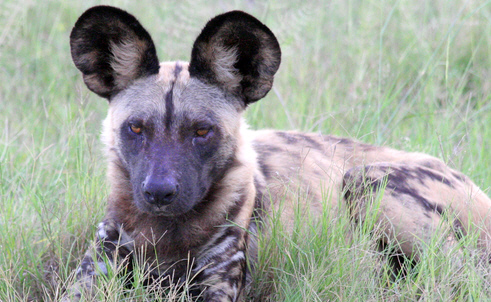
©TK Boyd 2/12
My luck held!! Many people have gone to the Okavango three times and not seen wild dogs once. I've seen them each time I've gone! They are rare, and usually nomadic, so if a pack was "here" yesterday, it is probably elsewhere today, although I'm told there is one camp... or is it a game park?... with a resident group. I asked my guide how many tourists out of 100 see these wonderful creatures. He was reluctant to name a number, but I think he thought 10 generous.
On my trip to the Okavango with Cornell in 2008, I had an encounter with wild dogs which still brings a lump to my throat.
Against green grass, the wild dog's coloring isn't very good camouflage. But if the grass is green, it is, or soon will be, long. In the dry season, when the grass goes brown and flat, and fires leaving soot and white ash are common, you can look at a resting wild dog from 30 feet away and not see him.
They remind me of border collies, "sheepdogs", and thus enter the race for my favorite with a big advantage. They even all, as far as I've observed, have "border collie" white tips to their tails! The large ears are in part about dissipating heat. (Lycaon pictus, Wikipedia entry.
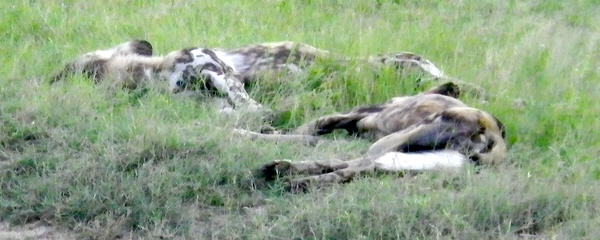
©TK Boyd 2/12
No, not dead wild dogs... just resting between meals. When they rest, they rest!
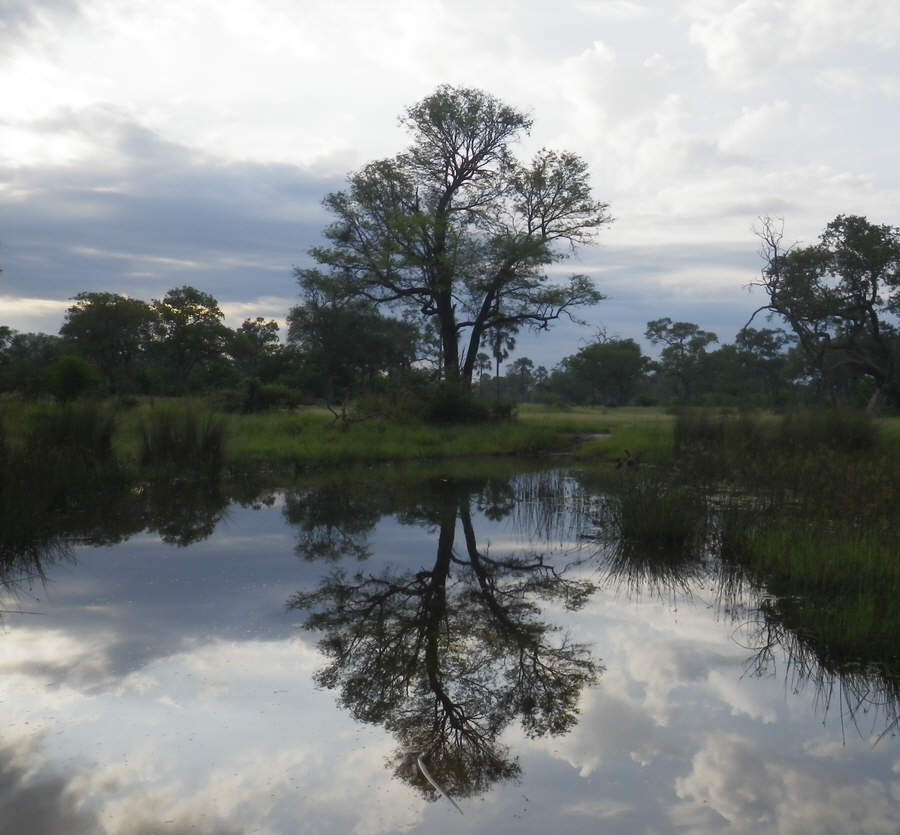
©TK Boyd 2/12
xx
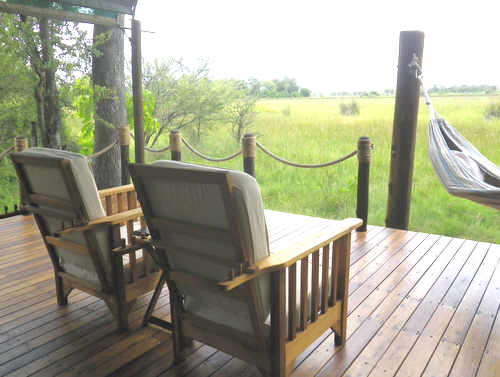
©TK Boyd 2/12
xx
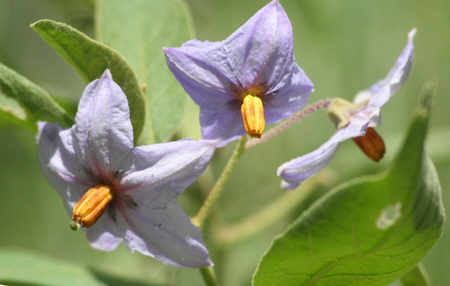
©TK Boyd 2/12
xx
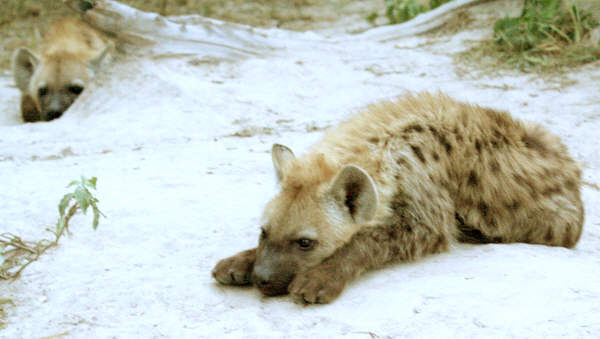
©TK Boyd 2/12
In a moment, a link to a short video of some hyena pups I was taken to meet by our excellent guide.
One late afternoon, he became a little mysterious. He took us off road to see a particular abandoned termite's nest. Okay. They are interesting animals, worthy of your attention. But we'd gone to quite a bit of trouble.
Nothing of interest at the first nest, but then we pushed on, through even more difficult conditions, to an adjacent abandoned nest... How the guides just do the driving they do is beyond me, without everything else that they do at the same time.
And, as we arrived, we rapidly realized that the second mound had been "re-purposed" by a clan of hyenas. A den had been excavated... or an anteater or other's work taken over by the hyenas.
A number of cubs (right word, pp Wikipedia, though I think of them as pups) were at home, no parents. The cubs were of various ages, greeted us with various degrees of interest, caution, enthusiasm, etc. I think that for many of them we constituted some entertainment in an otherwise boring afternoon.
Their chewing at the vehicle's tyre was amusing... up to a point. When you recall that the adults chew up and digest the bones of wildebeest, your interest in having the cubs/ pups chew your tyre diminishes.
(Hyena dung is often white from the amount of bone meal in it.)
Cub/ pup? They look dog-like, and have some canine behaviors. But the DNA and other behaviors tell us that hyenas are more closely related to cats.
Don't shun the poor less- than- lovely hyena. They are interesting creatures, and become less ugly as you get to know them. The spotted hyena... the sort in the photo... don't just scavenge, by the way... they are formidable hunters in their own right.
Just below here should be a link to a YouTube clip of the pups/ cubs. I'm new to this sort of embedding, so let me know if the clip won't play nicely for you? Word of what equipment you were using would possibly help.
The first two cubs that you see are only about a foot tall. (At their withers.)
(If that didn't work for you, you should be able see the same clip by going to http://youtu.be/bV56IzFktmE)
And then there's the Vimeo alternative!! Again.. news of your experience with this would be welcomed.
This page © TK Boyd 2/11. Click here to contact him.
You are also invited to Tom Boyd's homepage, including software for schools, kids, and others.
![]() Page will be tested for compliance with INDUSTRY (not MS-only) standards, using the free, publicly accessible validator at validator.w3.org. An early draft of the page was valid apart from several things inside the code to embed the video clip of the ocelots.
Page will be tested for compliance with INDUSTRY (not MS-only) standards, using the free, publicly accessible validator at validator.w3.org. An early draft of the page was valid apart from several things inside the code to embed the video clip of the ocelots.
- - - Page ends - - -